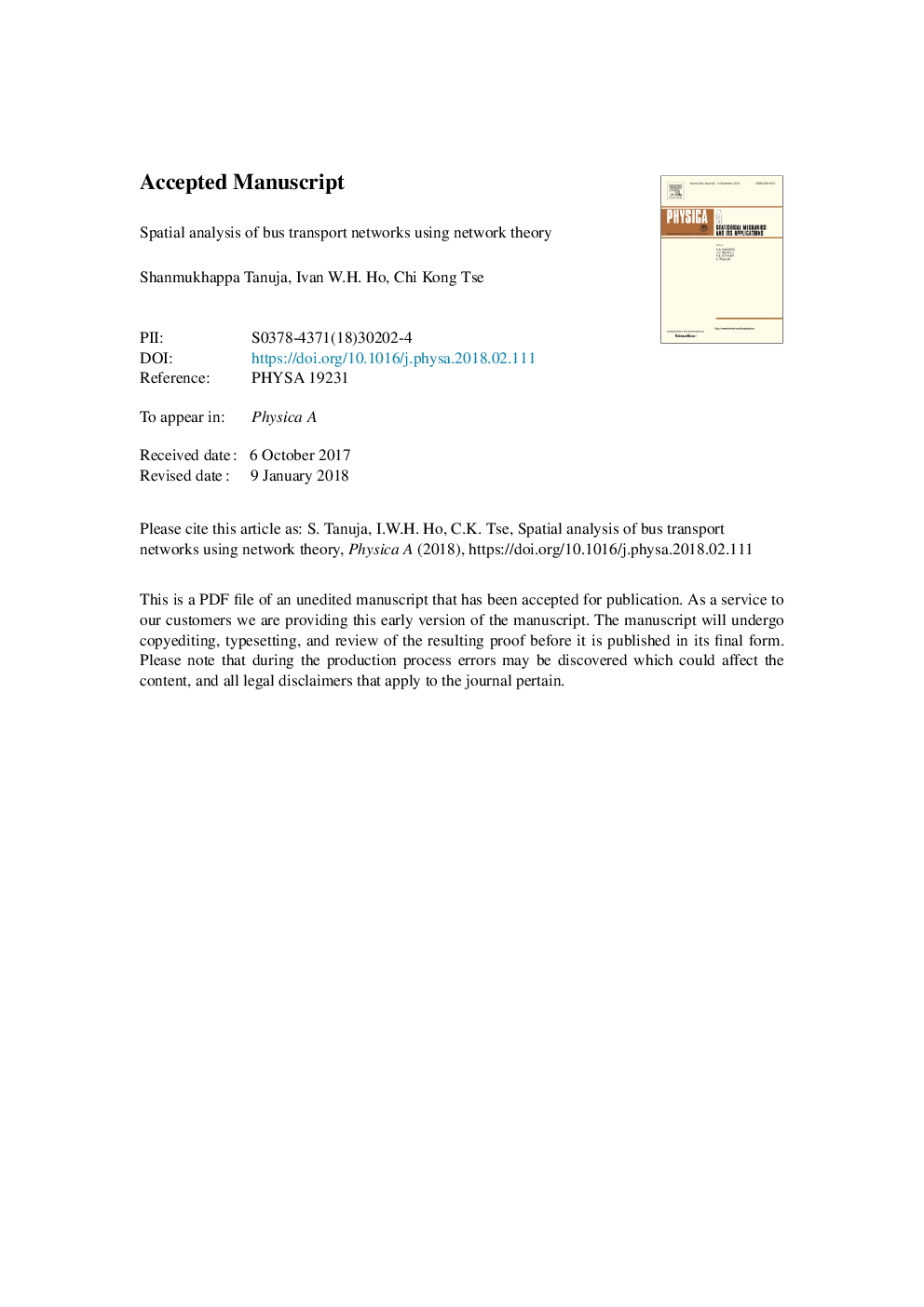| کد مقاله | کد نشریه | سال انتشار | مقاله انگلیسی | نسخه تمام متن |
|---|---|---|---|---|
| 7375520 | 1480071 | 2018 | 25 صفحه PDF | دانلود رایگان |
عنوان انگلیسی مقاله ISI
Spatial analysis of bus transport networks using network theory
ترجمه فارسی عنوان
تجزیه و تحلیل فضایی شبکه های حمل و نقل اتوبوس با استفاده از نظریه شبکه
دانلود مقاله + سفارش ترجمه
دانلود مقاله ISI انگلیسی
رایگان برای ایرانیان
موضوعات مرتبط
مهندسی و علوم پایه
ریاضیات
فیزیک ریاضی
چکیده انگلیسی
In this paper, we analyze the bus transport network (BTN) structure considering the spatial embedding of the network for three cities, namely, Hong Kong (HK), London (LD), and Bengaluru (BL). We propose a novel approach called supernode graph structuring for modeling the bus transport network. A static demand estimation procedure is proposed to assign the node weights by considering the points of interests (POIs) and the population distribution in the city over various localized zones. In addition, the end-to-end delay is proposed as a parameter to measure the topological efficiency of the bus networks instead of the shortest distance measure used in previous works. With the aid of supernode graph representation, important network parameters are analyzed for the directed, weighted and geo-referenced bus transport networks. It is observed that the supernode concept has significant advantage in analyzing the inherent topological behavior. For instance, the scale-free and small-world behavior becomes evident with supernode representation as compared to conventional or regular graph representation for the Hong Kong network. Significant improvement in clustering, reduction in path length, and increase in centrality values are observed in all the three networks with supernode representation. The correlation between topologically central nodes and the geographically central nodes reveals the interesting fact that the proposed static demand estimation method for assigning node weights aids in better identifying the geographically significant nodes in the network. The impact of these geographically significant nodes on the local traffic behavior is demonstrated by simulation using the SUMO (Simulation of Urban Mobility) tool which is also supported by real-world empirical data, and our results indicate that the traffic speed around a particular bus stop can reach a jammed state from a free flow state due to the presence of these geographically important nodes. A comparison of the simulation and the empirical data provides useful information on how bus operators can better plan their routes and deploy stops considering the geographically significant nodes.
ناشر
Database: Elsevier - ScienceDirect (ساینس دایرکت)
Journal: Physica A: Statistical Mechanics and its Applications - Volume 502, 15 July 2018, Pages 295-314
Journal: Physica A: Statistical Mechanics and its Applications - Volume 502, 15 July 2018, Pages 295-314
نویسندگان
Tanuja Shanmukhappa, Ivan Wang-Hei Ho, Chi Kong Tse,
